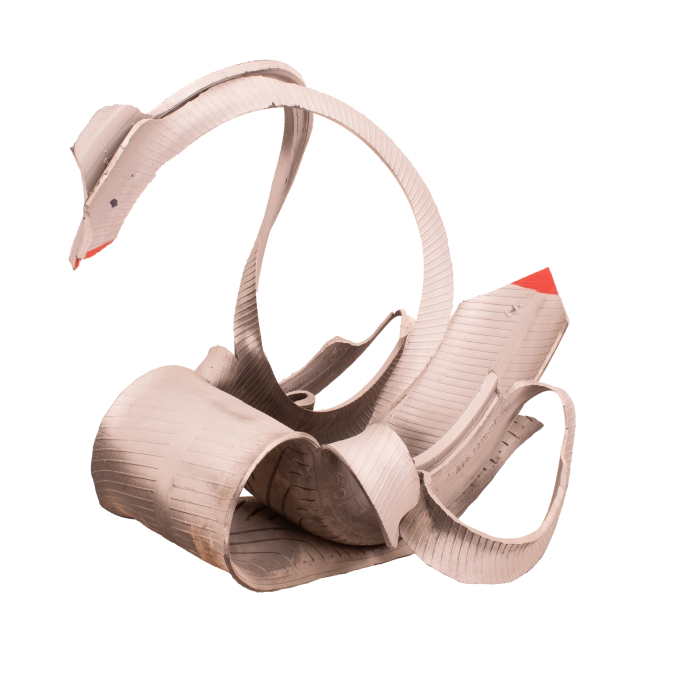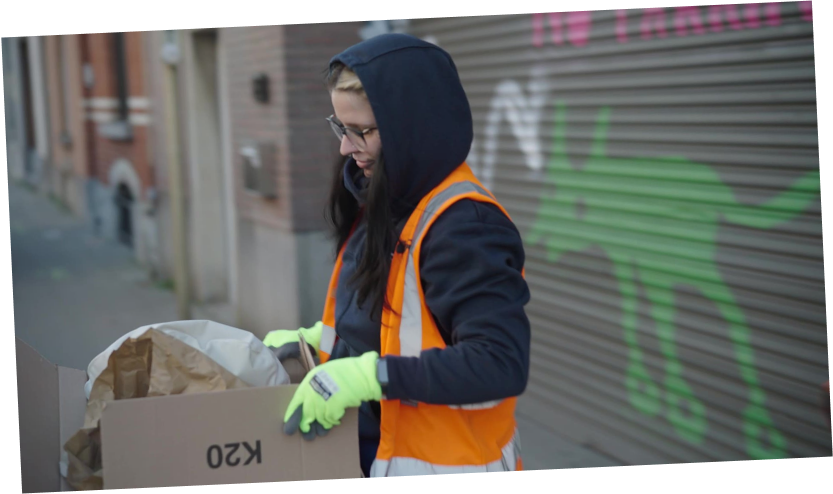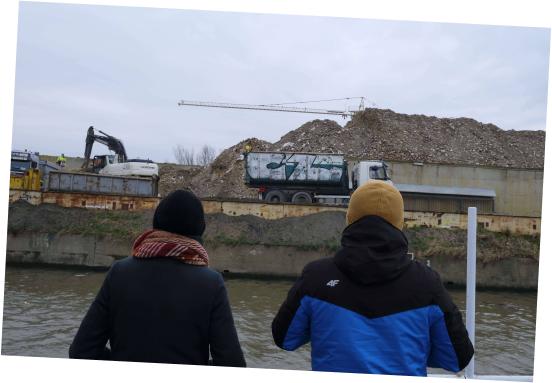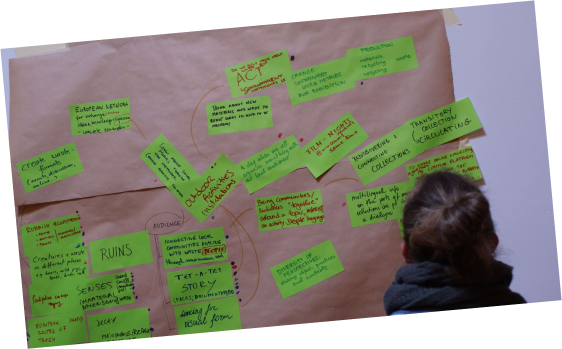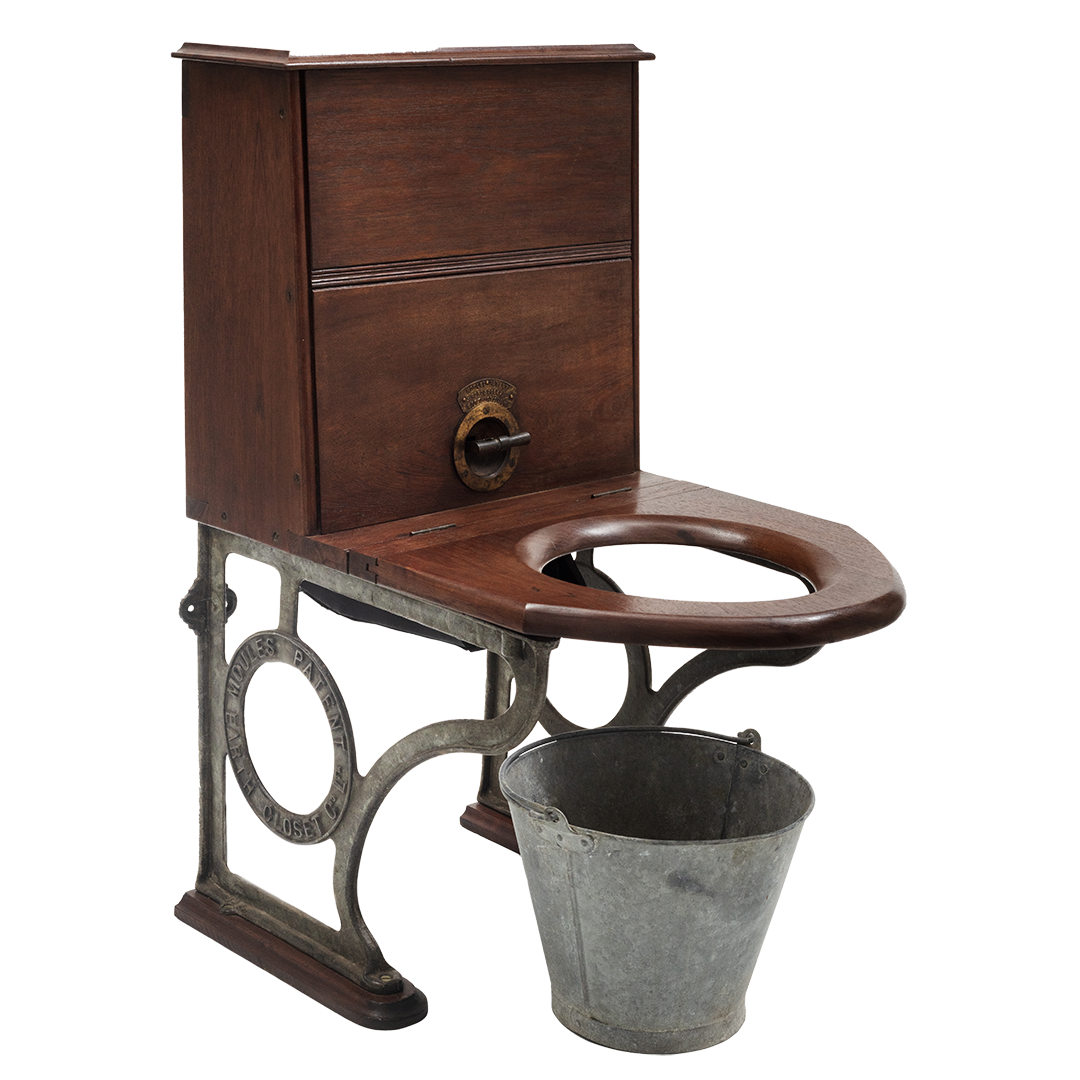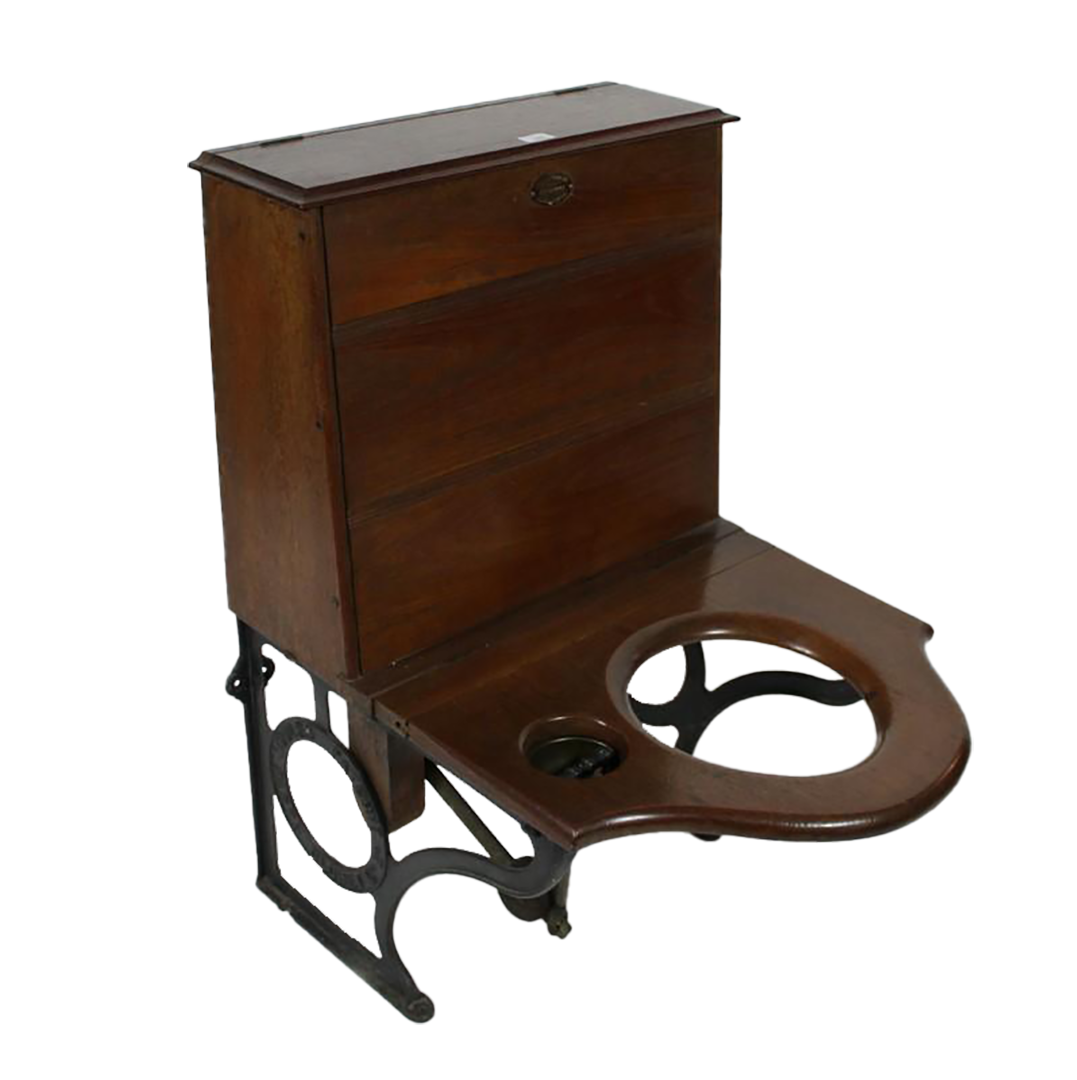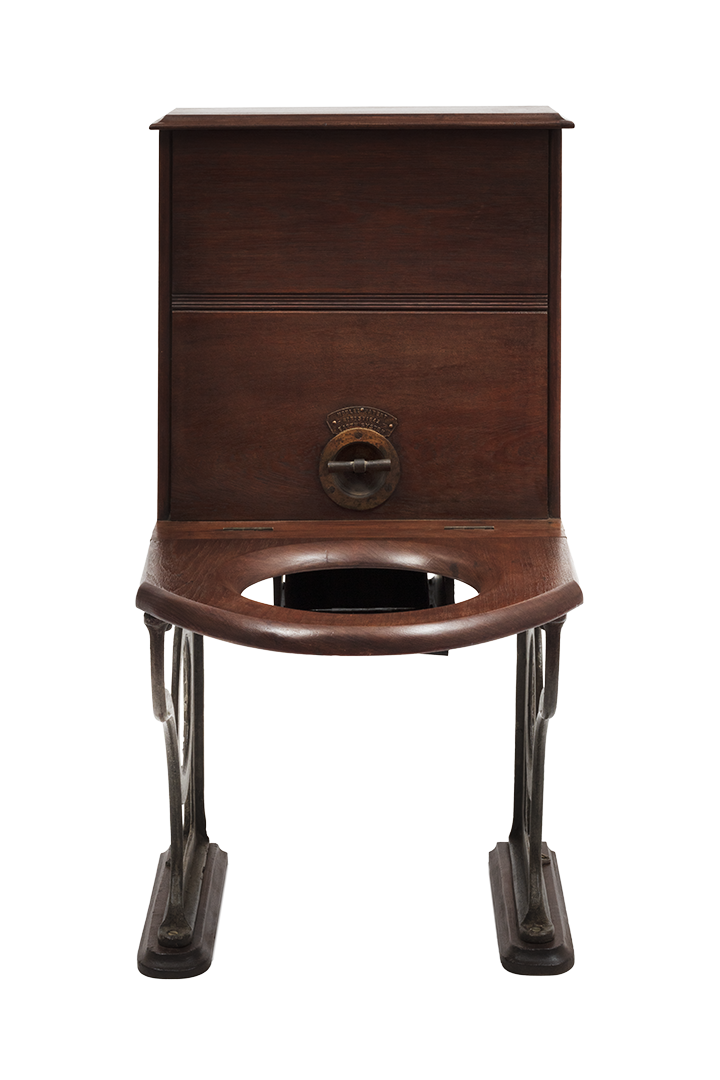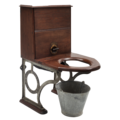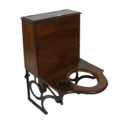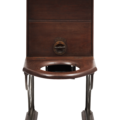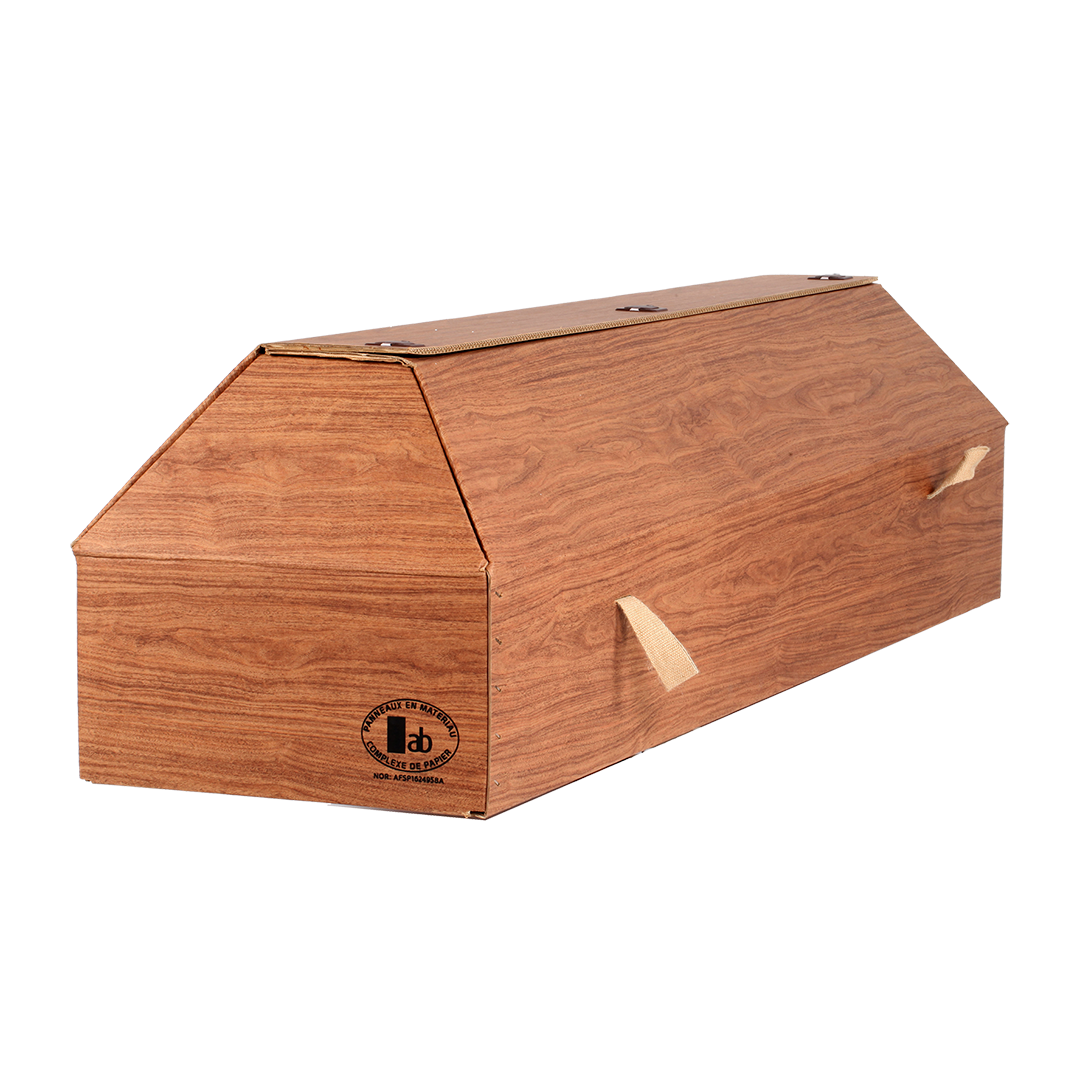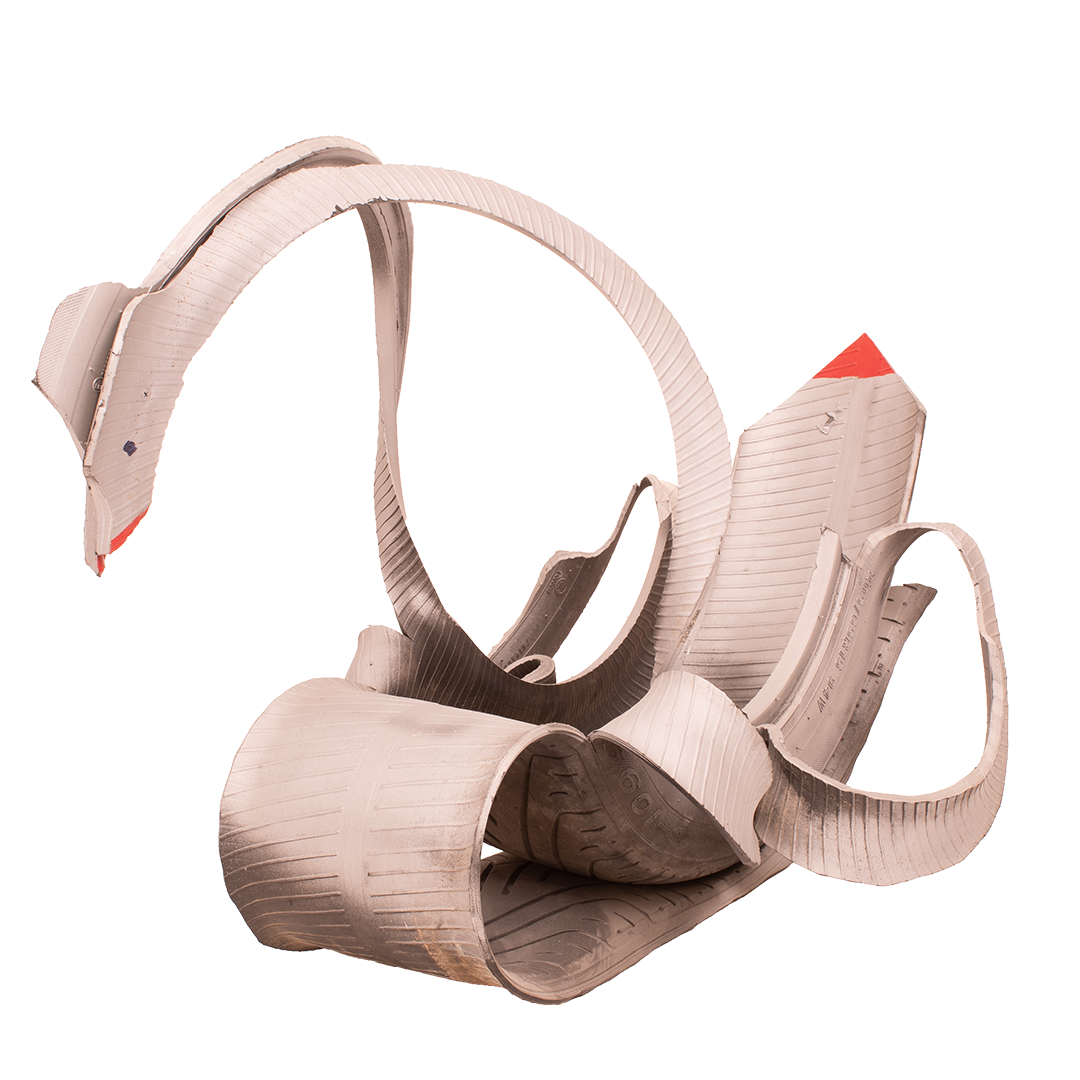Artist/Maker Reverend Henry Moule (1801-1880), inventor
Date Production/Creation
Circa 1875
Entry in the museum collection
2022
Place of origin
United Kingdom, Europe
Current location
House of European History, Bruxelles, Belgique
Material
Wood, cast iron
Dimension
(H x W x D): 94.60 x 49.50 x 75.00 cm
Inventory Number 2021.0050.85
Keyword Hygiene Environment Technology
Copyright EU, EP, House of European History, Brussels
Status On display
Image Credit Photo 2022 by Regular Studio, © EU, European Parliament
Henry Moule was not a typical priest. He designed this composting toilet to fight water pollution.
What is this object about, who are the people behind it?
The Earth Closet was invented and patented in 1860 in the United Kingdom by an Anglican priest, the Reverend Henry Moule. Several new models were subsequently developed. The system was adopted in hospitals, military barracks and educational institutions. The Earth Closet is a 19th-century version of what we would nowadays call a dry - or composting - toilet. Earth or ashes are stored in the metal container under the wooden hood at the back of the seat. When the "business" is done, one activates the "flush" with a lever and the earth falls onto the excrements in the bucket placed under the seat. The bucket is not an original part of this exemplar of the Earth Closet.
What places is this object related to, how European/transnational is it?
With the dramatic population growth and the expansion of cities in the wake of the Industrial Revolution, the quantities of human waste naturally increased and started to become a problem for sanitary reasons. Invented in England and progressively adopted in several European cities, the flush toilet, linked to the development of running water, even worsened these issues. Flushing indeed poured large quantities of water into the existing cesspits, which overflowed into the streets, rivers and created immense disturbances. Water was also the principal vector of cholera outbreaks that flourished in Europe throughout the 19th century. The development of modern sewerage systems was the solution. Until very recently, though, this "tout-à-l’égout" (everything to the sewer) system meant that excrement ended up in rivers.
Why and how did this object arrive in the museum’s collection?
The object was acquired specifically for the Throwaway exhibition and has entered the permanent collection of the House of European History.
What is the relation of this object to waste?
Alarmed by the cholera outbreaks in his home county of Dorset, Moule started to develop an interest in sanitary science. He invented his Earth Closet as what he perceived to be a viable alternative to the increasingly popular water closet. By replacing water with earth, he said, one can at the same time save water, which is a precious resource, avoid the pollution of rivers, as well as save very precious nutrients that can be used as agricultural fertilisers. The Reverend promoted his invention with biblical references. As he stated himself, "in God’s providence there is no waste". These thoughts are emblematic of 19th-century attempts to use every piece of waste as a possible resource.

